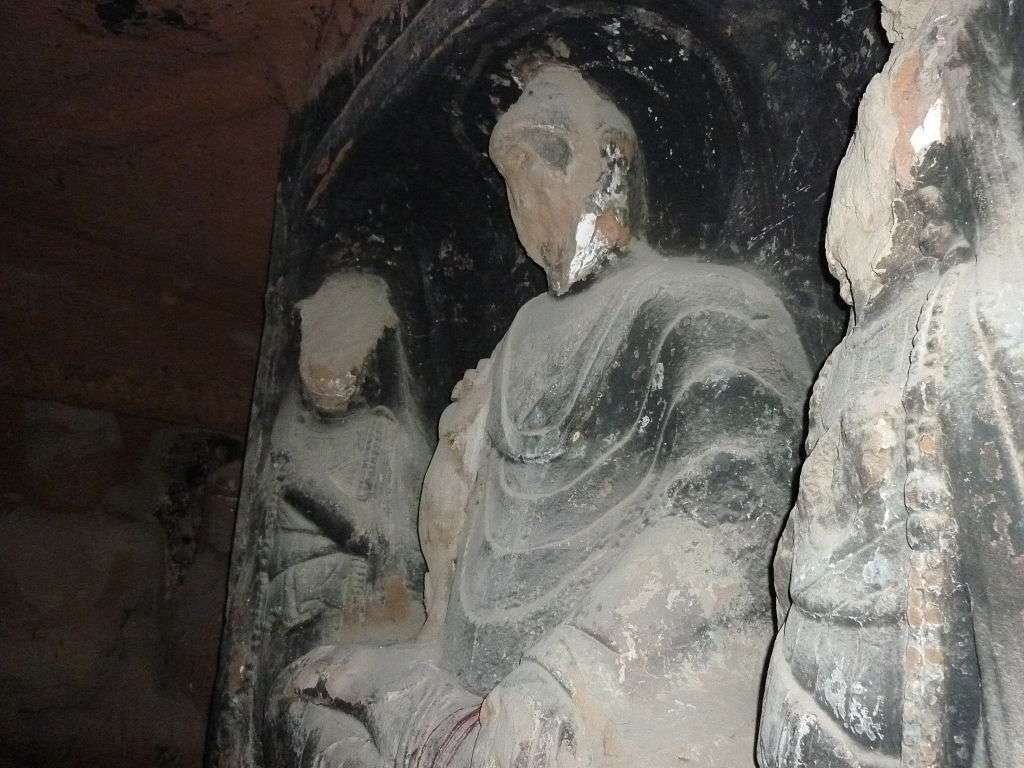Amid statue toppling, let’s avoid a cultural revolution

Buddha statues whose faces were destroyed during Chinas Cultural Revolution. Credit Pat B via Wikimedia CC BY SA 20
Cardinal Timothy Dolan of New York wrote Sunday that the destruction of monuments is detrimental to the knowledge of history, and warned against a ‘cultural revolution’ like that of China under Mao Zedong.
“God forbid we’d go through a cultural revolution as China did five decades ago. Beware those who want to purify memories and present a tidy – and inaccurate – history,” the cardinal wrote in a June 28 opinion piece at the Wall Street Journal.
China’s Cultural Revolution of 1966-76 sought to eradicate traditional elements from Chinese society, particularly old customs, old culture, old habits, and old ideas.
“And who’s to say which statues, portraits, books and dedications are spared,” the cardinal asked. “Remember when some objected to raising the status of the Martin Luther King Jr.’s birthday to a national holiday, citing his self-admitted flaws?”
Many public monuments have been the focus of vandalism or have been thrown down in recent weeks.
Long-controversial statues of Confederate leaders were toppled in some localities, as were statues of George Washington, Christopher Columbus, and Ulysses S. Grant. At least two statues of St. Junipero Serra were knocked down by rioters in California, and a statue of St. Louis has been protested against.
The cardinal recalled the story of a parishioner who opposed his dedication of a new parish to Saint Peter, citing the first pope’s three-fold denial of Christ.
“Knowing her and what parish she was from, I wrote back, ‘But you’re a proud parishioner at St. Mary Magdalene Church. She was sure not a paragon of virtue for a chunk of her life. Yet, by God’s grace, she became a radiant, inspirational saint. If we can’t name churches after sinners, the only titles we’d have left would be Jesus and His Mother!’”
He noted that the same is true “of America’s historical personalities,” adding that “all of them had flaws, yet all of them still contributed a lot of good to our nation’s progress.”
He said toppling statues and vandalizing monuments is comparable to book burning.
“Our children need to know their country’s past, its normative figures and their virtues and vices. That’s how we learn and pass on our story,” he said.
He suggested that there is no “more effective way to comprehend America’s history of racism” than by reading Huckleberry Finn or the short stories of Flannery O’Connor.
“My own mom kept a photo of her parents hanging on the wall of our house. Her dad, my grandfather, was an abusive drunk who abandoned his family. I’m glad we got to know of him, the good and the bad,” Cardinal Dolan wrote.
He reflected that “if we only honor perfect, saintly people of the past, I guess I’m left with only the cross. And some people would ban that.”
Having studied American Church history, he said that “as a historian … I want to remember the good and the bad, and recall with gratitude how even people who have an undeniable dark side can let light prevail and leave the world better.”
“I want to keep bringing classes of schoolchildren to view such monuments, and to explain to them how even such giants in our history had crimes, unjust acts and plain poor judgment mixed in with the good we honor.”



‘Beware those who want to purify memories and present a tidy – and inaccurate – history’ says the cardinal.
Yes indeed!
I guess that is what so many of these monuments already represent? A tidy and inaccurate reflection of the past?
We need to find a way to remember the whole complex, inspiring, messy, and sometimes unforgivable stories of our past.
We so much want there to be ‘goodies’ and ‘baddies’ so we know which side to champion and which side to condemn…..
Sadly our lives, and histories, as flawed people are not so simply categorised!